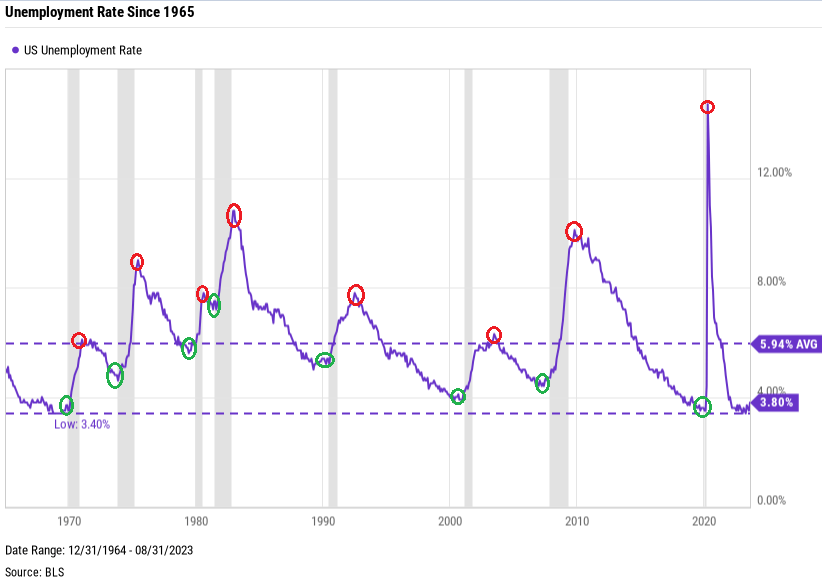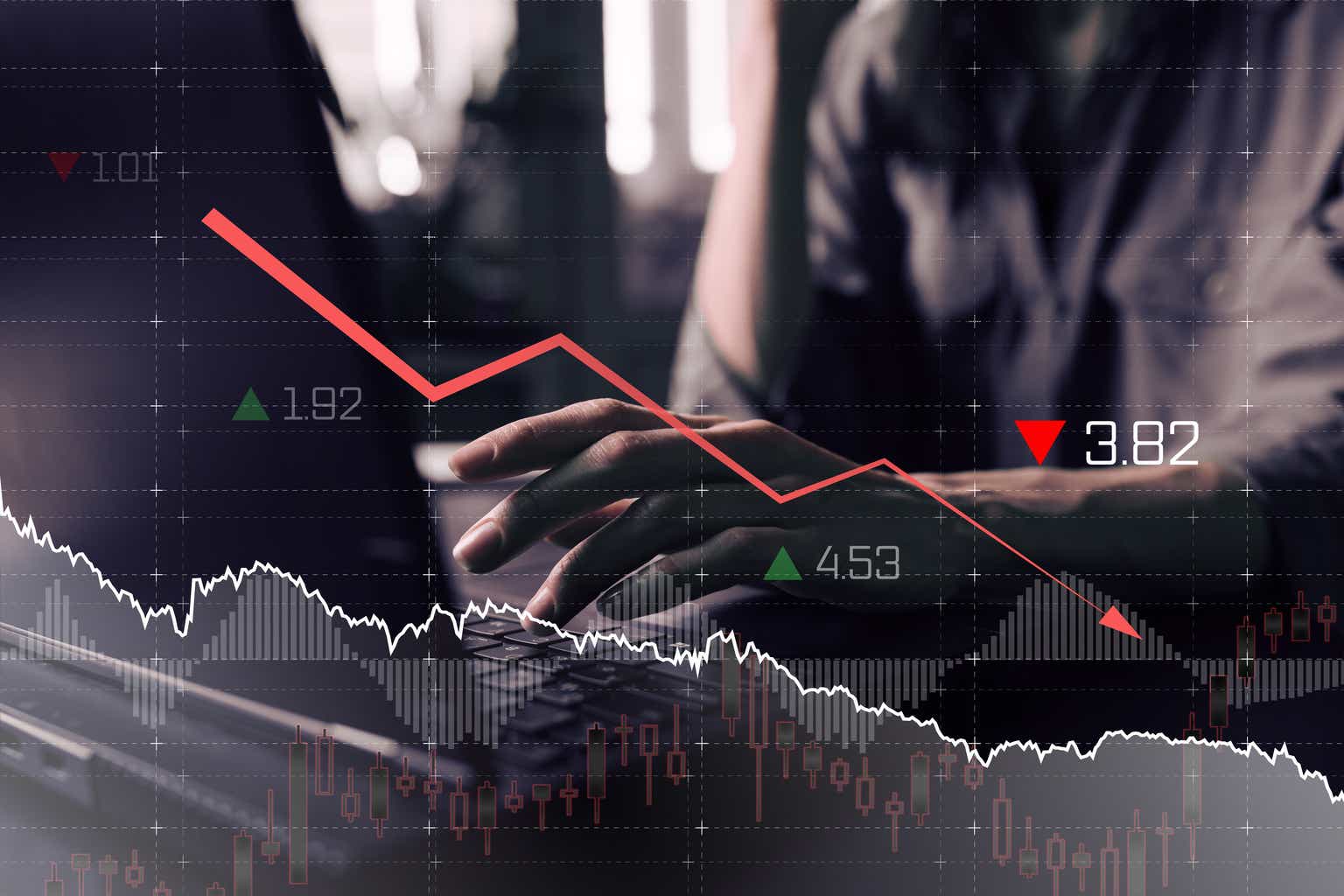Data provided by the Bureau of Labor Statistics (BLS) for August of 2023 showed that the US unemployment rate was 3.80%, one of the lowest in 50 years (July’s number was 3.50%).
Meanwhile, Wall Street economists predicted a greater than 50% chance of a US recession in the next 12 months. Many people wonder: How can these both be true? How can the US economy enter a recession when such a small portion of the labor force is unemployed?
The answer is that the conventional wisdom is backwards. Low unemployment does not prevent a recession. Recessions lead to higher unemployment, not the other way around.
A low unemployment rate indicates the economy is near its high point. Typically, unemployment reaches its lowest point before a recession begins. Recessions occur for many different reasons but that downturn in economic activity (whatever the cause) eventually causes the unemployment rate to rise.
There are multiple ways to think about whether a recession has taken place and we often don’t know one has occurred until after the fact. One definition of a recession is two or more consecutive quarters of negative Gross Domestic Product (GDP) growth. This occurred in 2022 when GDP growth was negative in the first and second quarters.
However, the only official determination of the occurrence and timing of a recession is provided by the National Bureau of Economic Research (NBER). Per their website, “the NBER’s traditional definition of a recession is a significant decline in economic activity that is spread across the economy and that lasts more than a few months…”
The chart below depicts the US unemployment rate (blue line) and the NBER’s official dating of a recession (gray bars). In every case, the unemployment rate was at or near a cycle low before a recession occurred and the unemployment rate then increased during the recessionary period.

Source: Business Cycle Dating
We show a similar chart below of the unemployment rate since 1965. We can see that the low point in the unemployment rate occurred before the recessions and the high point occurred after the recessions ended.

What does this information show?
Recessions occur for many reasons, including pandemics, oil price shocks, and housing market collapses. The increase in unemployment occurs because of the decrease in economic activity.
With history as a guide, the information above indicates that the conventional wisdom is backwards when thinking that a recession cannot or will not occur simply because the unemployment rate is low.
Original Post
Editor’s Note: The summary bullets for this article were chosen by Seeking Alpha editors.
Read the full article here








